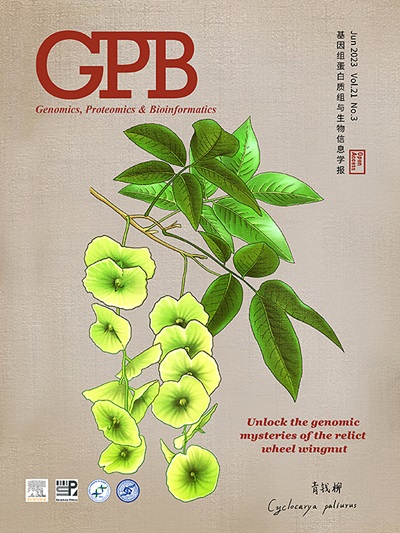Dynamic DNA 5-hydroxylmethylcytosine and RNA 5-methycytosine Reprogramming During Early Human Development
IF 7.9
2区 生物学
Q1 GENETICS & HEREDITY
引用次数: 0
Abstract
After implantation, complex and highly specialized molecular events render functionally distinct organ formation, whereas how the epigenome shapes organ-specific development remains to be fully elucidated. Here, nano-hmC-Seal, RNA bisulfite sequencing (RNA-BisSeq), and RNA sequencing (RNA-Seq) were performed, and the first multilayer landscapes of DNA 5-hydroxymethylcytosine (5hmC) and RNA 5-methylcytosine (m5C) epigenomes were obtained in the heart, kidney, liver, and lung of the human foetuses at 13–28 weeks with 123 samples in total. We identified 70,091 and 503 organ- and stage-specific differentially hydroxymethylated regions (DhMRs) and m5C-modified mRNAs, respectively. The key transcription factors (TFs), T-box transcription factor 20 (TBX20), paired box 8 (PAX8), krueppel-like factor 1 (KLF1), transcription factor 21 (TCF21), and CCAAT enhancer binding protein beta (CEBPB), specifically contribute to the formation of distinct organs at different stages. Additionally, 5hmC-enriched Alu elements may participate in the regulation of expression of TF-targeted genes. Our integrated studies reveal a putative essential link between DNA modification and RNA methylation, and illustrate the epigenetic maps during human foetal organogenesis, which provide a foundation for an in-depth understanding of the epigenetic mechanisms underlying early development and birth defects.
人类早期发育过程中DNA 5-羟基甲基胞嘧啶和RNA 5-甲基胞嘧啶的动态重编程。
植入人体后,复杂而高度特化的分子事件会形成功能各异的器官,而表观基因组如何影响器官的特异性发育仍有待全面阐明。在这里,我们进行了纳米-hmC-Seal、RNA亚硫酸氢盐测序(RNA-BisSeq)和RNA测序(RNA-Seq),首次在人类胎儿13-28周的心脏、肾脏、肝脏和肺部共123个样本中获得了DNA 5-羟甲基胞嘧啶(5hmC)和RNA 5-甲基胞嘧啶(m5C)表观基因组的多层图谱。我们分别鉴定了 70,091 个和 503 个器官和阶段特异性羟甲基化区域(DhMRs)和 m5C 修饰的 mRNA。关键转录因子(TFs)--T-盒转录因子 20 (TBX20)、配对盒 8 (PAX8)、krueppel-like factor 1 (KLF1)、转录因子 21 (TCF21) 和 CCAAT 增强子结合蛋白 beta (CEBPB)--特别有助于不同器官在不同阶段的形成。此外,富含 5hmC 的 Alu 元素可能参与调控 TF 靶向基因的表达。我们的综合研究揭示了DNA修饰和RNA甲基化之间的重要联系,并展示了人类胎儿器官形成过程中的表观遗传图谱,为深入了解早期发育和出生缺陷的表观遗传机制奠定了基础。
本文章由计算机程序翻译,如有差异,请以英文原文为准。
求助全文
约1分钟内获得全文
求助全文
来源期刊

Genomics, Proteomics & Bioinformatics
Biochemistry, Genetics and Molecular Biology-Biochemistry
CiteScore
14.30
自引率
4.20%
发文量
844
审稿时长
61 days
期刊介绍:
Genomics, Proteomics and Bioinformatics (GPB) is the official journal of the Beijing Institute of Genomics, Chinese Academy of Sciences / China National Center for Bioinformation and Genetics Society of China. It aims to disseminate new developments in the field of omics and bioinformatics, publish high-quality discoveries quickly, and promote open access and online publication. GPB welcomes submissions in all areas of life science, biology, and biomedicine, with a focus on large data acquisition, analysis, and curation. Manuscripts covering omics and related bioinformatics topics are particularly encouraged. GPB is indexed/abstracted by PubMed/MEDLINE, PubMed Central, Scopus, BIOSIS Previews, Chemical Abstracts, CSCD, among others.
 求助内容:
求助内容: 应助结果提醒方式:
应助结果提醒方式:


